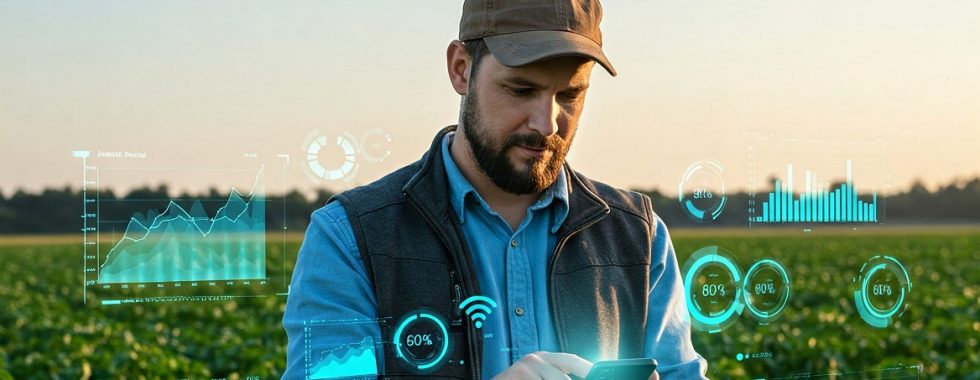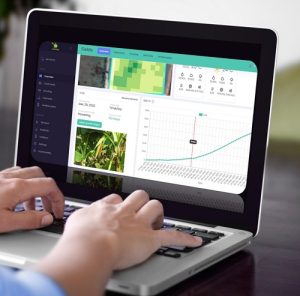How Digital Farming is Redefining Risk Management
Agriculture is inherently risky, with farmers and agribusinesses constantly facing uncertainties related to weather. Such risks include pests, diseases, fluctuating market prices, and supply chain disruptions and more . Effective risk management is crucial for ensuring sustainable production, food security, and profitability. In recent years, Information and Communication Technology (ICT) has emerged as a powerful tool for mitigating these risks. These technologies provide real-time information, predictive analytics, and automation to enhance decision-making.
How ICT Supports Risk Management in Agriculture
ICT includes a wide range of digital technologies, such as mobile applications, remote sensing, artificial intelligence (AI), blockchain, and big data analytics. These innovations help farmers and agribusiness managers monitor environmental conditions, optimize resource allocation, reduce losses, and improve overall efficiency.
One of the biggest advantages of ICT is its ability to provide instant, location-specific information. Farmers can receive real-time weather forecasts, pest and disease alerts, and market price updates via mobile phones or digital platforms. This timely information allows them to make proactive decisions, such as adjusting planting schedules based on rainfall predictions or implementing pest control measures before an outbreak escalates.
Drones and Satellite Imagery: A Game-Changer in Risk Mitigation
When integrated with data analysis systems, drones and satellite imagery become powerful ICT tools for agricultural risk management. These technologies provide high-resolution images of farmland, allowing farmers to detect stress factors such as nutrient deficiencies, waterlogging, pest infestations, or disease outbreaks before they become widespread.
For example, a drone equipped with multispectral cameras can scan a field and detect areas where crops are under stress due to undetected pest activity. Instead of applying pesticides uniformly, farmers can target specific affected zones, reducing chemical use and saving costs. Satellite imagery, on the other hand, allows for large-scale monitoring, helping government agencies and agribusinesses predict droughts, assess flood damage, and optimize resource distribution.
This level of precision enables better risk management by providing early warnings, reducing input costs, and improving overall productivity.
Market Access and Price Stability through ICT
Fluctuating market prices and limited access to buyers are significant risks for farmers, especially smallholders who rely on intermediaries. ICT solutions, such as digital trading platforms and mobile-based marketplaces, connect farmers directly with consumers, retailers, and exporters.
By using these platforms, farmers can access real-time demand and price data, allowing them to make informed decisions about when and where to sell their produce. Some platforms even facilitate contract farming agreements, securing fair prices in advance and reducing uncertainty. This improved market access ensures farmers get better prices, reduces post-harvest losses, and stabilizes income.
Financial Services and Digital Insurance for Farmers
Access to credit and insurance is another critical factor in managing agricultural risks. Many smallholder farmers struggle to obtain loans due to a lack of collateral or credit history. ICT has facilitated digital lending platforms that assess farmers’ creditworthiness using alternative data sources, such as past yield records and mobile transaction histories. This enables financial institutions to offer customized loan products.
Similarly, digital agricultural insurance has become more accessible due to ICT advancements. Traditional crop insurance often involves lengthy claim processes. However, with remote sensing and AI-driven assessments, insurers can now process claims based on real-time data. For example, if satellite imagery detects severe drought conditions in a particular region, insurance payouts can be triggered automatically.
These digital financial services empower farmers by providing them with the resources they need to invest in improved seeds, irrigation systems, and other risk-reducing technologies.
AI-Powered Farm Management: Smarter Risk Mitigation
Artificial Intelligence (AI) is revolutionizing farm management by providing real-time risk assessment, predictive analytics, and automated decision-making.
For example, an AI-powered system can predict a disease outbreak weeks in advance by analyzing satellite imagery, local climate trends, and past infection patterns. Farmers receive instant alerts and targeted treatment plans, reducing crop losses and minimizing pesticide overuse.
Additionally, AI-driven yield prediction models help farmers estimate production volumes. This way, they can plan better for storage, marketing, and supply chain logistics. By integrating AI with ICT tools like drones, IoT sensors, and mobile farm management apps, farmers can automate risk management and make data-driven decisions that improve productivity and profitability.
Platforms like yieldsApp use AI to analyze vast amounts of data—including weather patterns, soil health, and crop performance to offer farmers precise recommendations on irrigation, fertilization, and pest control.
Enhancing Supply Chain Efficiency with ICT
Supply chain disruptions, whether due to transportation failures, poor storage conditions, or logistical inefficiencies can lead to significant financial losses for farmers and agribusinesses. ICT helps streamline supply chains through digital logistics platforms, inventory tracking, and blockchain-based traceability systems.
For instance, blockchain technology enables farm-to-market traceability, ensuring that food products meet safety and quality standards. This is particularly important for export markets, where stringent regulations require proof of origin and production methods. With digital records, agribusinesses can minimize risks associated with product recalls, fraud, and non-compliance.
Additionally, real-time tracking systems allow farmers and suppliers to monitor transportation conditions, ensuring perishable goods reach markets in optimal condition, reducing waste and increasing profitability.
Challenges in ICT Adoption for Risk Management
While ICT offers transformative potential, there are challenges to widespread adoption, particularly in rural and developing regions. Some of the key barriers include:
- Limited internet access and infrastructure: Many remote farming communities lack reliable internet connectivity, making it difficult to access digital tools.
- High initial costs: Advanced technologies like drones and AI-driven analytics require investment, which may be prohibitive for small-scale farmers.
- Digital literacy gaps: Not all farmers are familiar with using smartphones, online platforms, or data-driven decision-making tools. Training and capacity-building initiatives are essential.
- Data privacy concerns: As more agricultural data is collected and stored digitally, ensuring farmers retain control over their data and preventing misuse by corporations is a growing concern.
Addressing these challenges will require a collaborative approach involving governments, private sector players, research institutions, and farmer cooperatives.
The Future of ICT in Agricultural Risk Management
As technology continues to evolve, the potential for ICT in risk management will expand further. Machine learning algorithms are improving predictive analytics, allowing farmers to anticipate risks with even greater accuracy. The Internet of Things (IoT) is enabling smart farming solutions, where connected sensors can autonomously manage irrigation, pest control, and nutrient application.
Agronomists, farmers, and agribusiness managers can build more resilient agricultural systems by embracing these innovations. This can improve food security and economic stability in an increasingly unpredictable world. ICT is no longer just an added advantage – it is becoming a necessity for modern risk management in agriculture.



